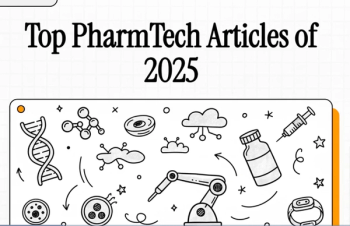
Developing First Disposable Injector for a Biopharmaceutical
Robin Hwang, a senior principal scientist at Amgen (Thousand Oaks, CA), led the team that developed the first commercial disposable auto-injector for a biopharmaceutical: a prefilled three-step "SureClick" for delivering Enbrel (etanercept), a treatment for autoimmune diseases.
Bethesda, MD (Oct. 24)-Developing "mechanical components in a drug world" was a challenge, according to Robin Hwang, a senior principal scientist at Amgen (Thousand Oaks, CA,
Hwang spoke at the three-day meeting, "The Universe of Pre-Filled Syringes and Injection Devices Forum," produced by the Parenteral Drug Association (PDA,
When Enbrel was first introduced, Hwang noted, it was distributed in a vial accompanied by instructions for a 50-step procedure for preparing and injecting the product. Five years later, Amgen introduced a simplified vial-adaptor.
Moving to a self-contained autoinjector, Hwang said, would further simplify administration, lessen patient dependence on providers, and greatly reduce opportunities for dosing errors. It would also increase patient acceptance, compliance, and satisfaction-a key consideration because competing products have emerged onto the market.
Though Hwang noted that the autoinjectors are treated as drug products and not devices, he described the development of "mechanical components in a drug world" as "complex." Pharmaceutical manufacturing engineers had to remaster the art of qualifying and assembling mechanical parts (supplied unassembled by an off-shore partner) and complying with regulations for drug current good manufacturing practice (CGMPs)…while also adhering to the spirit of the quality system regulations that govern medical device manufacturing.
One critical requirement, Hwang said, was to do detailed evaluations of all mechanical components operating in the presence of the drug product, "not to look just at dry-to-dry" performance. The development team had to pay particular attention to what Hwang called interfaces, the points of contact between part-and-part and part-and-drug.
Major points of study, Hwang said, included injection-molding defects; component misalignment; incomplete assembly; detection errors and false rejects in automated inspection; changes in component dimensions during development; and provisions for the reporting and handling of patient and provider inquiries, complaints, and adverse-event reports.
Newsletter
Get the essential updates shaping the future of pharma manufacturing and compliance—subscribe today to Pharmaceutical Technology and never miss a breakthrough.




